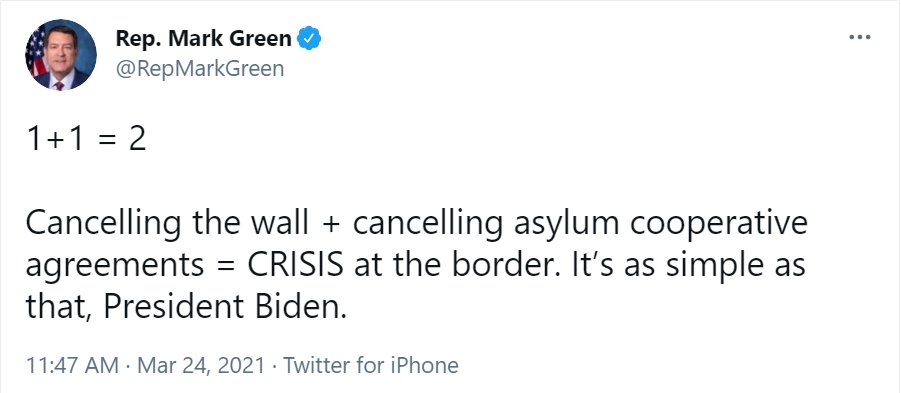
Yep, another good day of numbers on migrant children for the Biden administration. Yesterday hit a record low for unaccompanied children encountered at the border and the overall number of children in government custody dropped by 1,421 since one week ago. The trend line is good! 
https://twitter.com/MaxRivlinNadler/status/1391866684101730304

For reasons that are not entirely clear, the number of unaccompanied children coming to the border has been falling steadily for weeks after peaking in late March.
Numbers are still higher than 2019 but they keep falling. All those who predicted a peak in May were wrong.
Numbers are still higher than 2019 but they keep falling. All those who predicted a peak in May were wrong.

Meanwhile, the Biden administration continues to succeed at ramping up ORR's capacity to release children to their sponsors.
This week starts with the highest total for a Sunday since they began reporting numbers in late March. Every week has seen an overall capacity increase.
This week starts with the highest total for a Sunday since they began reporting numbers in late March. Every week has seen an overall capacity increase.

A correction: by "record low" in this tweet I meant "a record low since DHS began reporting daily numbers 7 weeks ago." Definitely not a record. I blame Monday brain.
It seems like we're seeing a bigger drop from April-May than we saw from March-April.
It seems like we're seeing a bigger drop from April-May than we saw from March-April.
https://twitter.com/ReichlinMelnick/status/1391868356471427072
• • •
Missing some Tweet in this thread? You can try to
force a refresh












![Quote from US law: "[The right to apply for asylum] sha](https://pbs.twimg.com/media/E0tpoTSXsA4HVKE.png)




